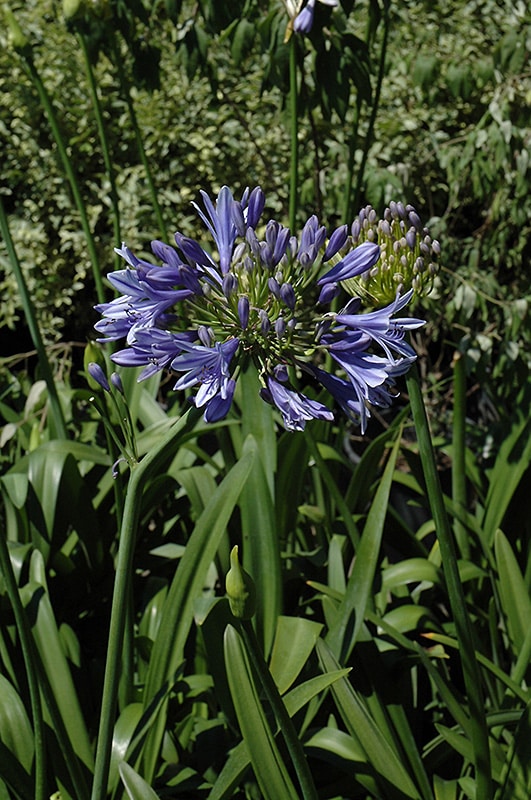Agapanthus Treatment Tips for Lush and Vibrant Flowers
Agapanthus Treatment Tips for Lush and Vibrant Flowers
Blog Article
Mastering the Art of Agapanthus Treatment: Necessary Actions for Healthy Development and Lively Blooms
In the realm of horticulture, the cultivation of agapanthus stands as a satisfying undertaking for those that seek to nurture these classy flowering plants. With their striking flowers and elegant vegetation, agapanthus has captured the focus of gardeners worldwide. However, attaining optimum development and vibrant blossoms calls for a nuanced approach that incorporates different vital actions. From selecting the ideal variety to mastering pruning strategies, the trip towards cultivating thriving agapanthus plants is complex and holds the crucial to unlocking the complete possibility of these agricultural gems.

Picking the Right Agapanthus Variety

When selecting the best Agapanthus range for your yard, think about factors such as environment suitability, bloom shade, and development practice. Additionally, think about the climate in your region to ensure the Agapanthus range you select can grow in your particular problems. Understanding the development routine of different Agapanthus ranges is crucial for correct placement within your yard.
Suitable Planting Conditions
Considering the ideal environmental demands is important for successful Agapanthus growing. Agapanthus prospers in well-draining dirt with a slightly acidic to neutral pH level. When planting, pick an area that gets complete sunshine to partial shade. In hotter climates, offering some mid-day color can stop scorching of the fallen leaves. Agapanthus plants are delicate to chilly temperatures and ought to be shielded from frost throughout winter months.
To make sure healthy development and lively flowers, plant Agapanthus light bulbs at a depth of concerning 2-4 inches and room them 8-12 inches apart. Including natural matter, such as compost, to the dirt can boost drain and fertility, promoting robust root development. Mulching around the base of the plants aids preserve dampness and suppresses weed development. Regular watering is crucial, especially during the growing period, to keep the dirt consistently damp however not soaked.
Watering and Fertilizing Tips
Keeping appropriate dampness levels and providing vital nutrients are key elements in the treatment routine for Agapanthus plants. It is critical to strike a balance when it comes to watering Agapanthus. If overwatered, these plants like continually moist dirt but are susceptible to root rot. Throughout the expanding season, water deeply when a week, making certain the soil is well-draining to avoid waterlogging. In hotter environments or during durations of drought, more constant watering might be required to maintain the soil evenly wet. Nonetheless, decrease watering in the wintertime to protect against water logged conditions.
Fertilizing Agapanthus is vital for promoting healthy growth and respected blooms. Use a well balanced fertilizer, such as a 10-10-10 formula, in the very early springtime as new development emerges. By following these watering and feeding pointers, you can guarantee your Agapanthus plants prosper and produce vivid, lasting blooms.
Trimming Techniques for Agapanthus
Pruning Agapanthus plants at the proper times and with correct methods is vital for maintaining their health and wellness and advertising optimum development and blooming. The perfect time to trim Agapanthus is in late winter or early spring prior to new growth arises.
For flowered stems, wait till the blooms have withered and after that trim them back to the base. This not only cleans up the plant's look yet also encourages the advancement of new blossom buds. Deadheading spent flowers can also redirect the plant's energy into generating even more blossoms instead of establishing seeds. However, if you want to collect seeds for propagation, leave some flowers to mature and completely dry on the plant.
Bear in mind to use tidy, sharp tools to webpage make specific cuts and minimize the danger of introducing diseases. Agapanthus. Regular trimming will aid maintain your Agapanthus looking healthy and neat while guaranteeing an abundant display screen of gorgeous flowers
Managing Typical Bugs and Diseases
After making certain correct trimming techniques for Agapanthus, it is crucial to attend to usual bugs and diseases that can influence the wellness and vigor of these plants. One usual bug that affects Agapanthus is the Agapanthus gall midge.
An additional typical issue is fungal fallen leave spot, which offers as dark lesions on the fallen leaves. To avoid fungal diseases, make sure great air circulation around the plants, stay clear of overhead watering, and eliminate any kind of contaminated leaves promptly. Additionally, Agapanthus plants can experience from origin rot if they are planted in poorly draining soil. To avoid this, plant Agapanthus in Website well-draining soil and avoid overwatering. By being watchful and taking timely activity versus diseases and parasites, you can aid your Agapanthus plants prosper and produce dynamic flowers.

Conclusion
In final thought, grasping the art of agapanthus treatment entails selecting the right variety, giving excellent planting conditions, correct watering and feeding, ideal trimming methods, and resolving typical insects and illness. By following these necessary actions, you can make sure healthy and balanced growth and vibrant blossoms for your agapanthus plants. Bear in mind to routinely keep track of and preserve your plants to promote their general health and longevity.
To make certain healthy growth and lively blooms, plant Agapanthus light bulbs at a deepness of concerning 2-4 inches and area them 8-12 inches apart. By complying with these watering and feeding tips, you can guarantee your Agapanthus plants flourish and create vibrant, lasting blooms.
One usual pest that affects Agapanthus is the Agapanthus gall midget. Additionally, Agapanthus plants can suffer from origin rot if they are grown in improperly draining dirt. By following these vital steps, you can ensure healthy growth and vibrant blossoms for Get More Info your agapanthus plants.
Report this page